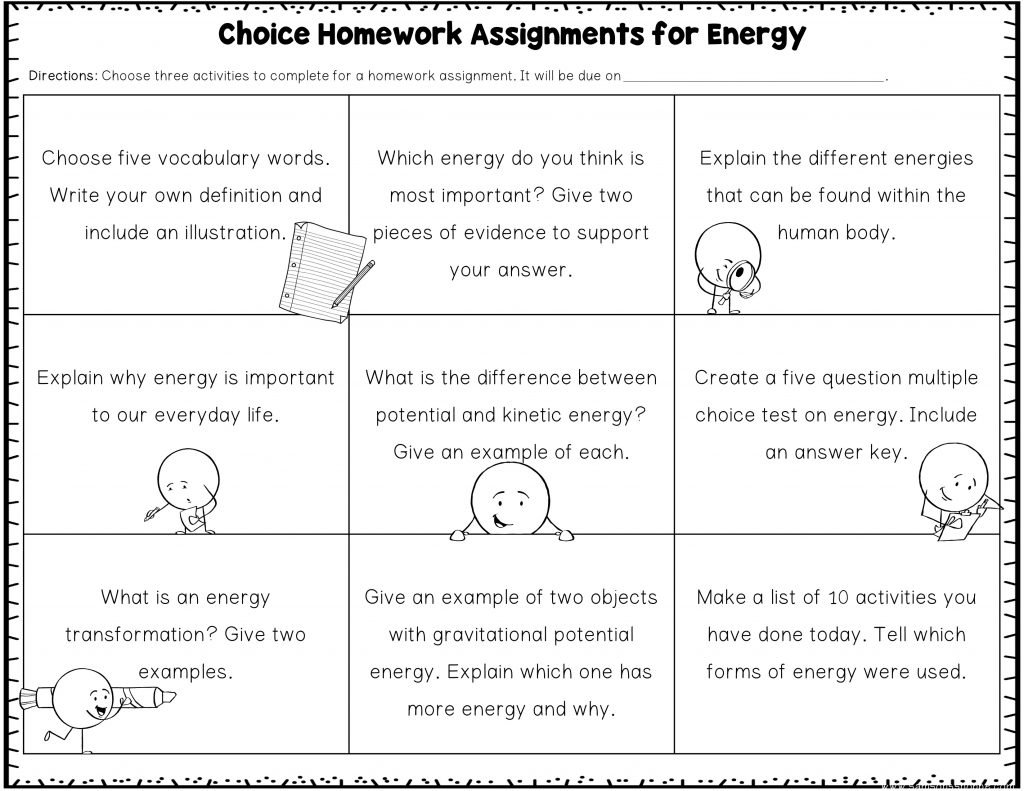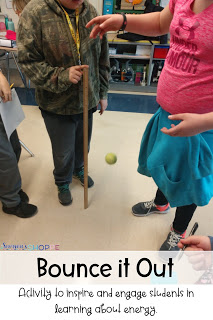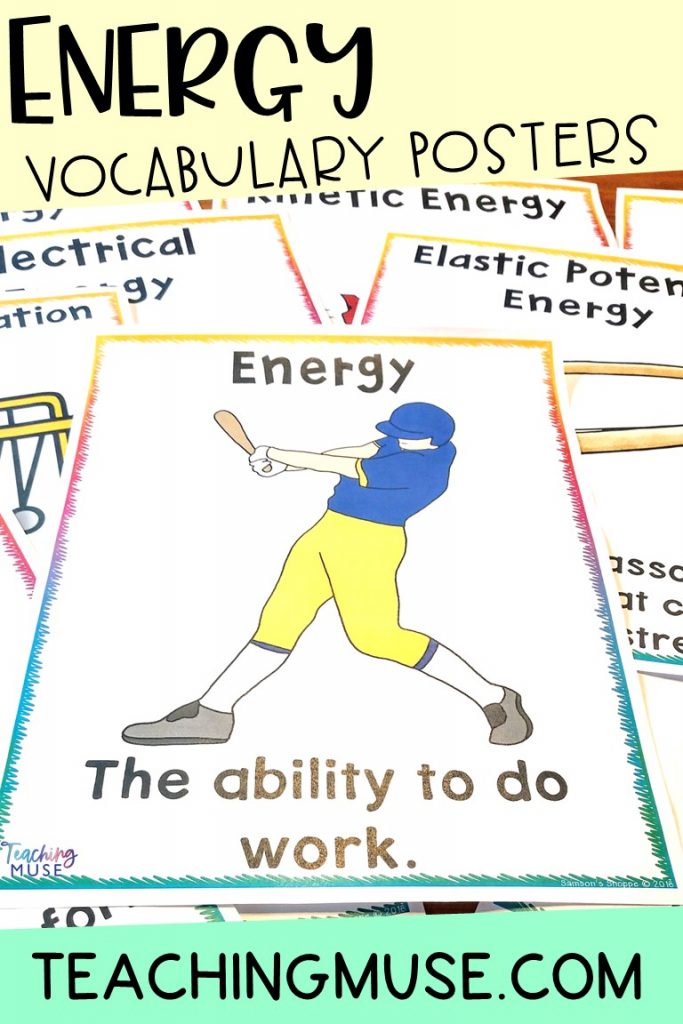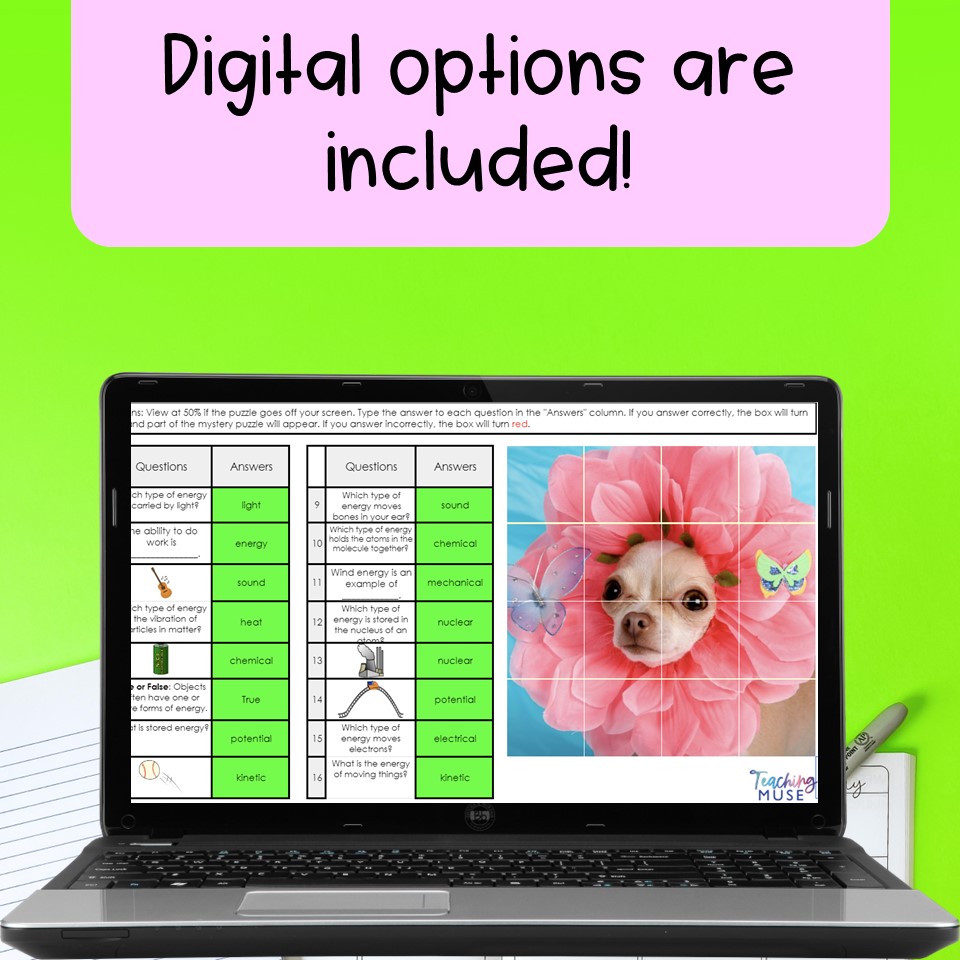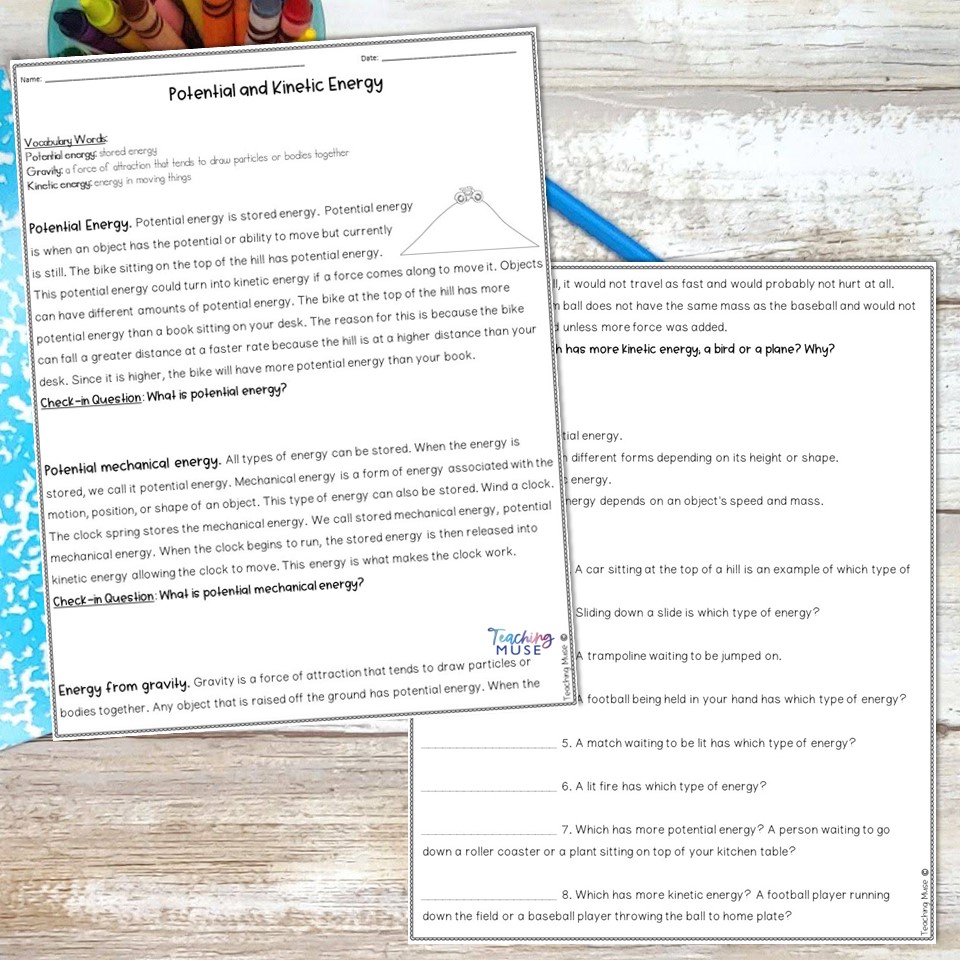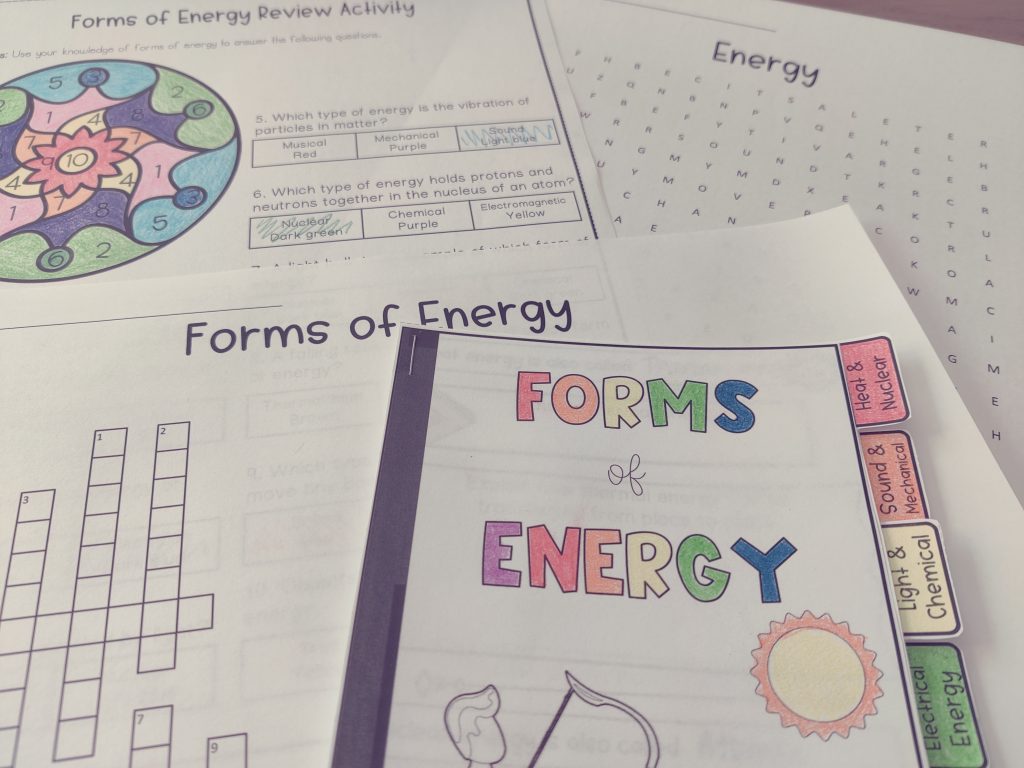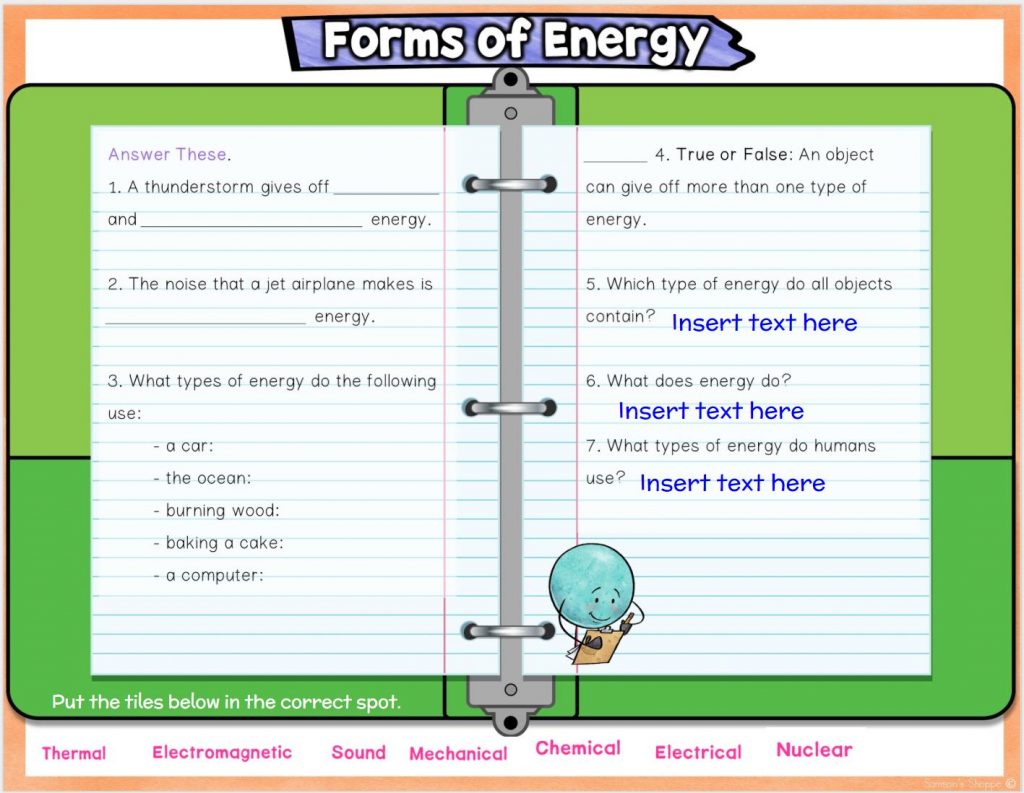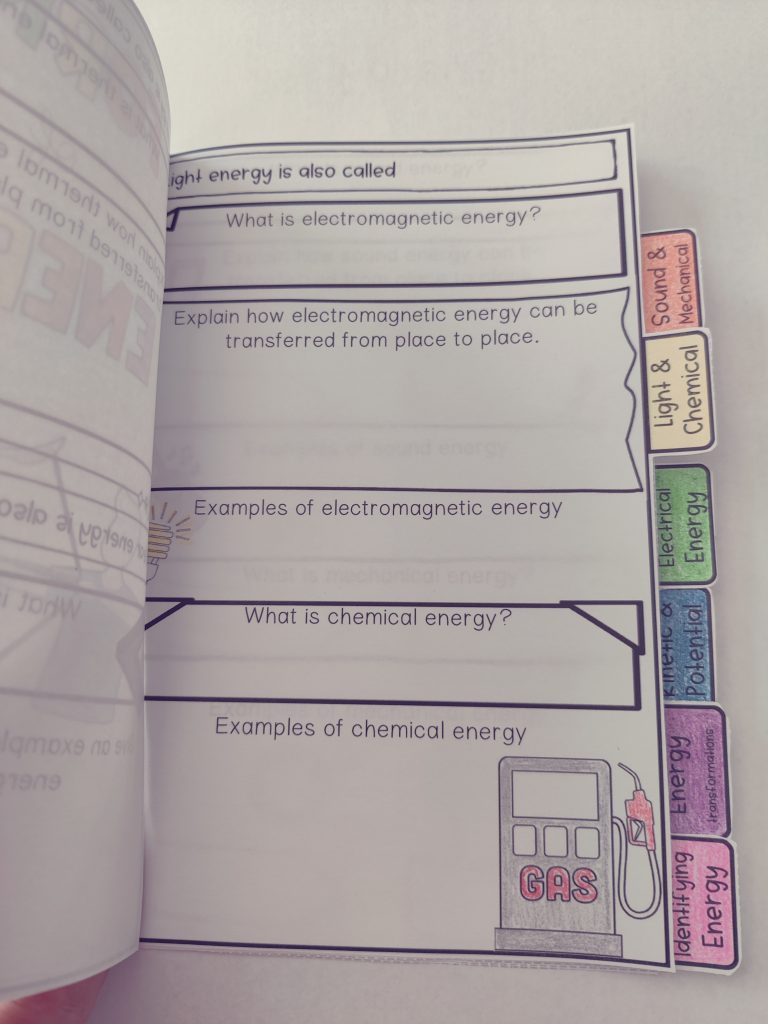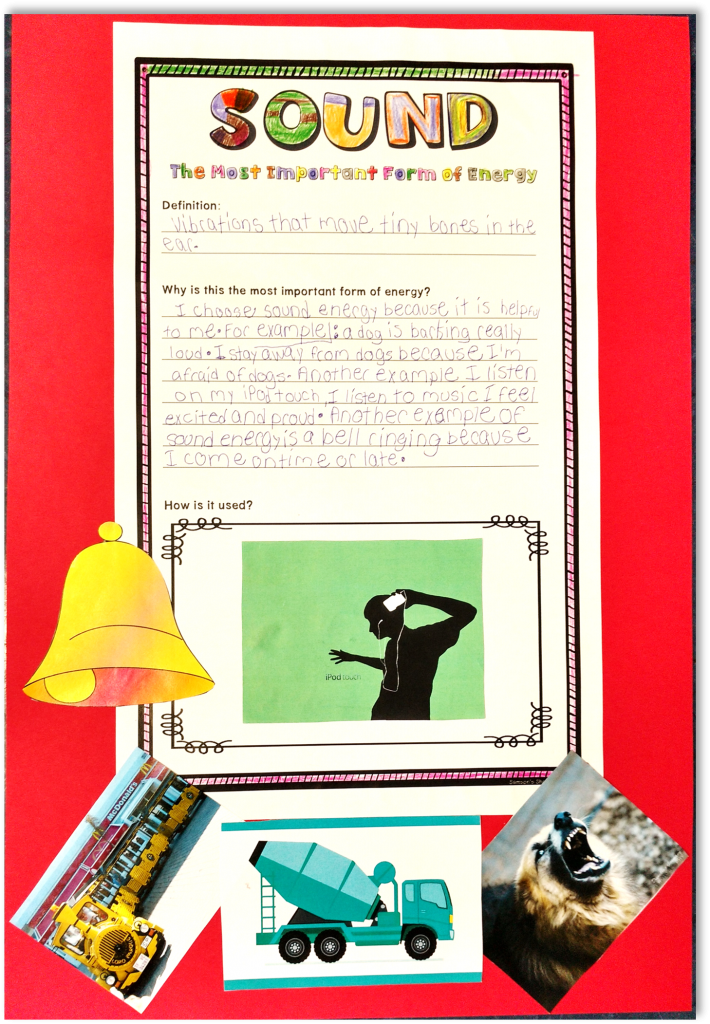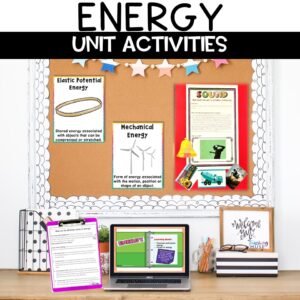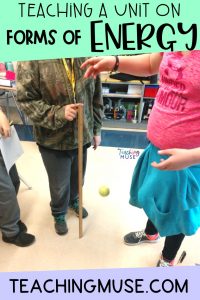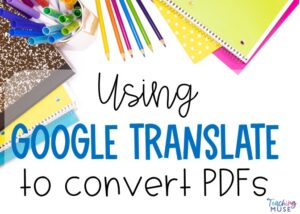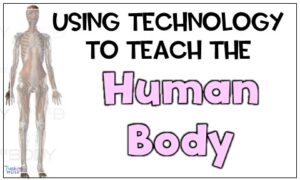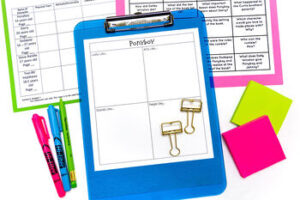
Are you looking for ideas and activities to use while teaching your students during a forms of energy unit? Then, check out these ideas and strategies to help make learning about energy, its forms, and transformations fun and engaging for your science students.
Forms of Energy Activities and Strategies
Include relevant homework assignments that incorporate student learning using choice homework assignments.
Assign this at the start of your forms of energy unit, giving students about a week to complete a tic, tac, toe arrangement. My research has found that student completion rate increases as well as the quality of work.
In addition to the assignment, there is a rubric to assess it. Use this activity as an assessment for your energy unit.
Energy Inquiry Activity
Start your forms of energy unit with an engaging activity called “Bounce it Out”.
Students are given a
- ruler
- tennis ball.
Instruct them to work in small groups and measure the height of each bounce.
Then, have students graph the bounce height and analyze the results.
Students enjoy this activity. It is an excellent motivator to get them up and moving around the classroom.
Teaching Energy Vocabulary
can prepare students for the next day’s lesson.
Potential and Kinetic Energy
Teach potential and kinetic energy first to help students understand energy.
When studying the two types of energy, we used digital notebooks. The notebooks had audio recordings that allowed the kids to hear me read them aloud. Of course, not all of them used this, but it was a helpful differentiation tactic for struggling readers to keep up with the pace and intensity of the rest of the class.
Teaching Forms of Energy
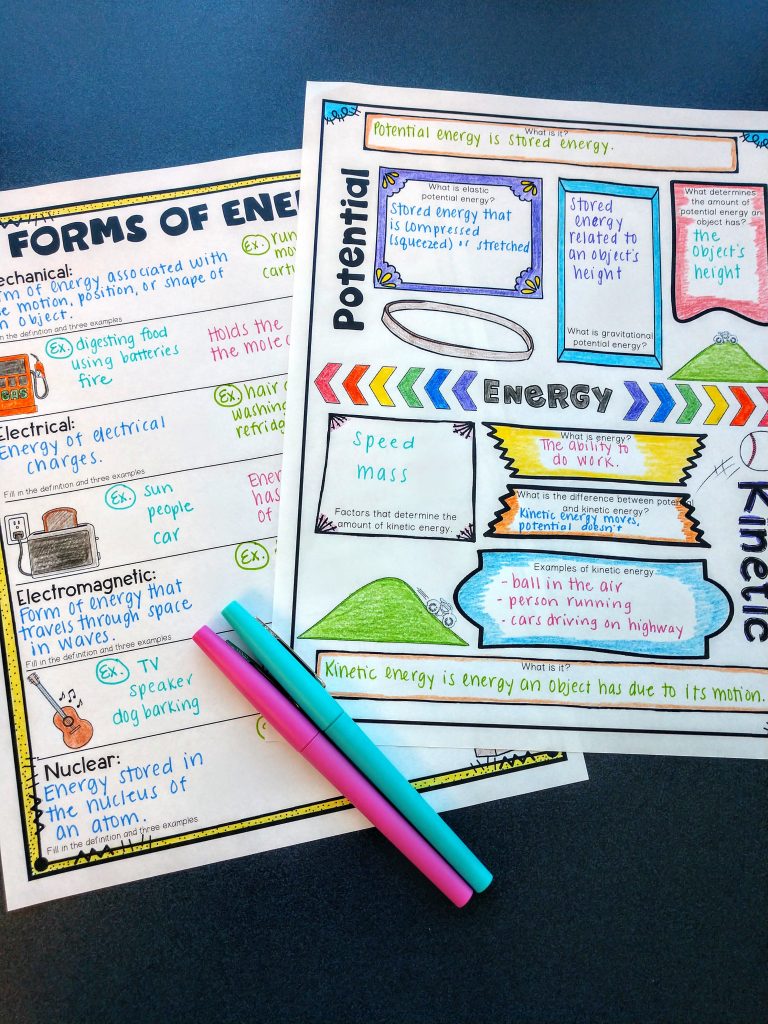
Students learn about seven forms of energy which are as follows:
- Electromagnetic energy (also referred to as light or radiant)
- Thermal energy (also referred to as heat energy)
- Sound energy
- Mechanical energy
- Chemical energy
- Electrical energy
- Nuclear energy
Other ways to reinforce this concept were with practice worksheets and a gallery walk.
The gallery walk was easy to set up. I had sheets of paper in which I included pictures of examples of one form of energy. I also included the definition. I did this for each of the seven types. Students then walked the room to identify which form of energy each one was. This was a great way to review each and get students up and moving.
Gallery Walk FREEBIE

Fill in your first name and email address to get instant access to the gallery walk to use with your students.
Success! Now check your email to confirm your subscription.
Students benefit from varied review activities. Sometimes using the same review over and over will fatigue students, so check out these ideas!
For this topic, Quizizz is a fun digital review game that students enjoy.
If you aren’t familiar with this type of review, check out my blog post on it. If you would like to use my Quizizz review, click here to get it.
Other ways to review energy are by completing a flipbook.
Students concisely summarize information allowing them to have an excellent tool for review.
Also, incorporate coloring into activities when appropriate.
Task cards are another fun way to review energy with your students. With print and digital options, you can have students review in small groups or work on it individually and grade their progress.
Assessments
Students can show what they know about a form of energy by creating a poster about it.
You could take this one step further to incorporate language arts skills by having them write a persuasive paragraph explaining why the form of energy they chose is the most important.
Teaching this forms of energy unit typically takes one to two weeks to teach. Students love the varied activities that they get to work on. How would your students like it? Let me know in the comments below.
Gallery Walk FREEBIE



Fill in your first name and email address to get instant access to the gallery walk to use with your students.
Success! Now check your email to confirm your subscription.

